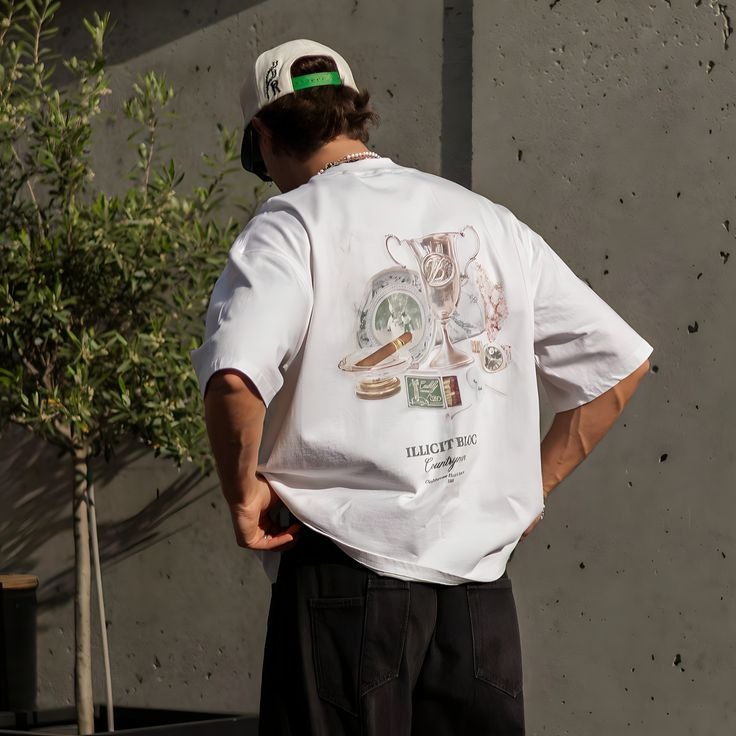The Timeless Appeal of T-Shirt: A Wardrobe Staple for All Generations

T-shirts are one of the most universal and beloved pieces of clothing worldwide. Their versatility, comfort, and style have made them a wardrobe essential for people of all ages and backgrounds. From basic white tees to trendy graphic prints, the t-shirt has evolved into a powerful fashion statement, a marketing tool, and a symbol of cultural expression. This article explores the history, evolution, significance, and trends surrounding t-shirts in modern fashion.
The Origins of the T-Shirt
The origins of the t-shirt can be traced back to the late 19th and early 20th centuries. Initially, they were designed as undergarments for laborers and military personnel. The modern t-shirt, as we know it today, evolved from the one-piece union suit, which was a popular undergarment for men. The garment was later divided into two pieces, with the upper half becoming the early version of the t-shirt.
In the early 20th century, the U.S. Navy issued white cotton t-shirts as part of their standard uniforms. These shirts were comfortable, easy to clean, and breathable, making them ideal for sailors working in hot conditions. By the 1920s and 1930s, t-shirts started appearing in mainstream fashion, with Hollywood icons like Marlon Brando and James Dean popularizing the garment in films such as A Streetcar Named Desire and Rebel Without a Cause.
The Rise of the T-Shirt in Popular Culture
The mid-20th century marked a significant turning point for t-shirts. During the 1950s and 1960s, the garment became a symbol of rebellion, youth culture, and individuality. Bands, political movements, and brands began using t-shirts as a medium for self-expression. The rise of screen printing techniques allowed for mass production of graphic tees, making it possible to print slogans, logos, and designs that conveyed personal and cultural messages.
The 1970s and 1980s saw the emergence of band t-shirts, featuring iconic rock bands like The Rolling Stones, The Beatles, and Led Zeppelin. These shirts became collectible memorabilia for music lovers and are still popular today. The punk rock movement also embraced t-shirts, using them as a canvas for DIY fashion, with ripped and safety-pinned designs reflecting an anti-establishment ethos.
The Role of T-Shirts in Branding and Marketing
T-shirts are more than just a fashion item; they are a powerful marketing tool. Brands, companies, and organizations have long used t-shirts to promote their identity and messages. The logo t-shirt, pioneered by brands like Nike, Adidas, and Coca-Cola, remains a staple in streetwear and casual fashion.
Corporate giveaways, political campaigns, and charity events often use t-shirts as promotional merchandise to spread awareness. A well-designed t-shirt can turn an ordinary person into a walking billboard, providing brands with cost-effective advertising. The popularity of branded t-shirts has contributed to the rise of luxury fashion houses incorporating t-shirts into their collections, with high-end labels like Gucci, Balenciaga, and Off-White producing premium graphic tees.
T-Shirts in Contemporary Fashion
Today, t-shirts are at the forefront of streetwear and casual fashion. With the rise of social media and influencer marketing, t-shirt trends spread rapidly across the globe. From oversized silhouettes to cropped designs, there is a t-shirt style for every preference.
Some of the most popular t-shirt trends in contemporary fashion include:
- Minimalist T-Shirts: Simple, clean designs featuring neutral colors and subtle branding.
- Vintage and Retro Prints: Nostalgic designs inspired by past decades, often featuring faded graphics and distressed textures.
- Graphic and Statement Tees: T-shirts with bold slogans, artistic prints, and pop culture references.
- Tie-Dye and Custom Prints: A resurgence of 1960s and 1970s-inspired tie-dye patterns, often seen in festival fashion.
- Sustainable T-Shirts: Made from organic cotton or recycled materials, promoting eco-friendly fashion choices.
The Future of T-Shirts: Sustainability and Innovation
As the fashion industry moves towards sustainability, t-shirts are undergoing a transformation. Many brands are shifting towards ethical manufacturing practices, using organic cotton, hemp, and bamboo fabrics to reduce environmental impact. Companies are also exploring biodegradable dyes and water-efficient production methods.
Another exciting development in t-shirt fashion is the integration of technology. Smart textiles, including temperature-regulating fabrics and moisture-wicking materials, are becoming more common. Some brands are even experimenting with interactive designs, such as LED-embedded t-shirts that change colors based on sound or movement.
Customization is another growing trend, with many consumers opting for personalized t-shirts featuring unique prints, monograms, or self-designed graphics. With the rise of print-on-demand services, anyone can create their own t-shirt brand with minimal investment.
Conclusion
T-shirts have come a long way from being a simple undergarment to a global fashion phenomenon. Their ability to adapt to changing trends, cultural shifts, and technological advancements makes them one of the most enduring and beloved clothing items. Whether worn as a casual staple, a statement piece, or a marketing tool, the t-shirt remains a symbol of self-expression and individuality. As sustainability and innovation continue to shape the fashion industry, the t-shirt will undoubtedly evolve while maintaining its timeless appeal.
